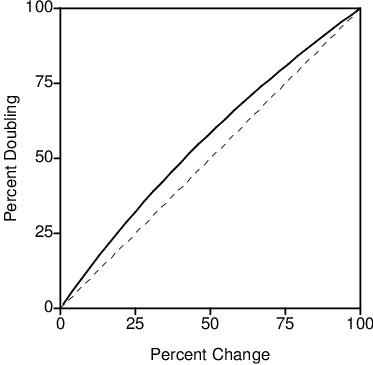I’ve already examined the classic Sleeping Beauty Problem and pointed out some of the pitfalls that many people fail to avoid when trying to solve the problem. I also examined Nick Bostrom’s so-called “Extreme Beauty” modification to the problem, in which Beauty wakes many, many times if the coin toss comes up tails. However, there is another “extreme” variant of this problem, the variant in which the coin toss is replaced with another two-result random process that has extremely uneven odds. That is, in this “extreme” problem, one of the possible results is extremely unlikely. Examining this variant with the methods of reasoning commonly used by the “thirders” can be enlightening and can provide some illustration of why they are wrong.
Since many “thirders” seem to be fond of relying on betting analogies to reason through the problem and explain their arguments, a useful substitute for the coin toss is a lottery. A typical lottery provides a very small chance of winning accompanied by a very large payoff (which is why lotteries are so popular). So here we shall examine what happens when Sleeping Beauty plays the lottery.

Read more »
 Games, Sports & Leisure
Games, Sports & Leisure  Comments Off on Dominoes Solitaire
Comments Off on Dominoes Solitaire 


![[Boy or Girl?]](http://thinknuclear.org/wp-content/uploads/2018/04/boy-girl.png)

![[Image from http://www.wikihow.com/Draw-Sleeping-Beauty]](http://thinknuclear.org/wp-content/uploads/2015/08/sbeauty-400x317.png)